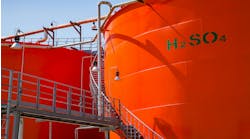[pullquote]
The origin of a significant portion of today’s chemical industry traces back more than a century to the pioneering work of an organic chemist at the Mellon Institute of Industrial Research in Pittsburgh, Pa. In the early 1910s, George Oliver Curme, Jr., and coworkers developed a method to produce hydrocarbon gases by subjecting a petroleum fraction, gas oil, to a submerged high-frequency electric arc. Their process promised a source of acetylene cost-competitive with that from calcium carbide. The route also yielded ethylene.
As World War I raged, the U.S. government, seeking an alternative to ethanol dehydration for producing ethylene (to make dichloroethyl sulfide for mustard gas), became interested in the idea of using the electric arc process to convert gas oil to ethylene, and approached Curme. Instead, he suggested using ethane because it requires less energy to crack.
This led to work at the Mellon Institute to develop a process to make dichloroethyl sulfide from ethylene dichloride derived from ethylene. Success prompted the start of construction, in the summer of 1918, of a small “commercial” ethylene plant at the Linde Air Products site in Buffalo, N.Y. However, before the plant was fully completed, the war ended — and, with it, demand for dichloroethyl sulfide.
That could have marked the end of the story. However, Curme conveyed his vision to executives at Union Carbide and Carbon Corp. (which had a stake in Linde):
“Starting with a plentiful supply of ethylene and acetylene, and the necessary by-products obtained in the manufacture of these substances, a huge chemical industry can be built up capable of absorbing thousands of tons of products annually. The Union Carbide and Carbon Corporation with control of the Linde process, the Carbide process, and with its knowledge and control of electric power projects, is in an exceptional position to exploit this field.”
A review of whether to continue the program began late in 1918. Fortunately, Curme’s vision of an aliphatic chemical industry convinced the executives to press on with the work. Linde was given responsibility for the project. The first production of ethylene occurred at Linde’s Buffalo plant in January 1920.
Unfortunately, fired destroyed the plant later that year. Rather than rebuilding in Buffalo, the company sought out a location with abundant supplies of natural gas, and settled on a site near Charleston, W. Va. In mid-1920, Carbide and Carbon Chemicals was formed to take over the project. Curme was named chief chemist of the new company. He eventually became vice president of research at Union Carbide Corp. and retired in 1955.
These details as well as an extensive review of the genesis and growth of Union Carbide appear in “A History of the Union Carbide Corporation from the 1890s to the 1990s,” a 1998 book by Robert D. Stief. You can access the book online. It’s an interesting read.
By the way, Stief claimed the formation of Carbide and Carbon Chemicals marked the birth of the petrochemical industry. That strikes me as an entirely reasonable contention. What do you think?
MARK ROSENZWEIG, Editor in Chief. You can email him at [email protected].



